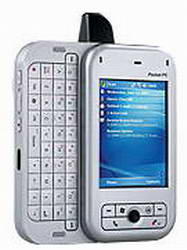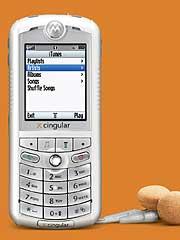Treo !
 Today Palm, Microsoft and Verizon
Today Palm, Microsoft and VerizonWireless unveiled the latest version of
Palm's Treo (touted around the web as
the Treo 700w) at a news conference in
San Francisco. This forthcoming Treo
smart phone runs Microsoft Corp.'s
Windows Mobile 5.0 operating system and
will have Outlook Mobile, Office Mobile
and Internet Explorer Mobile built into the
smartphone as standard. It will be
available in the US early next year. The
Treos combine the functionality of a PDA
with the ability to make phone calls and
browse the Internet.
Verizon Wireless, the No. 2 U.S. mobile
service, will be the first to sell the new
Treo phone. Verizon's growing Evolution-
Data Only (EV-DO) network based on
Code Division Multiple Access (CDMA)
technology allows download speeds
between 400Kbit/sec. and 700Kbit/sec. in
some parts of the US.
It was an open secret that the three
companies were working together. And
that meant there were few surprises in
Monday's announcement, delivered by Palm Chief Executive Ed Colligan,
Microsoft Chairman Bill Gates and Verizon Wireless CEO Denny Strigl. No
plans were revealed for additional mobile operators however, Palm
indicated that a GSM Treo smartphone using Windows Mobile would be
available in the second half of 2006.





 Apple Computer Inc. CEO Steve Jobs
Apple Computer Inc. CEO Steve Jobs